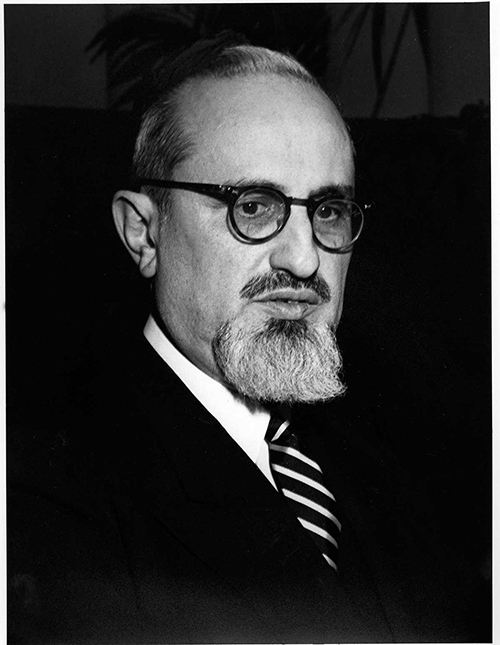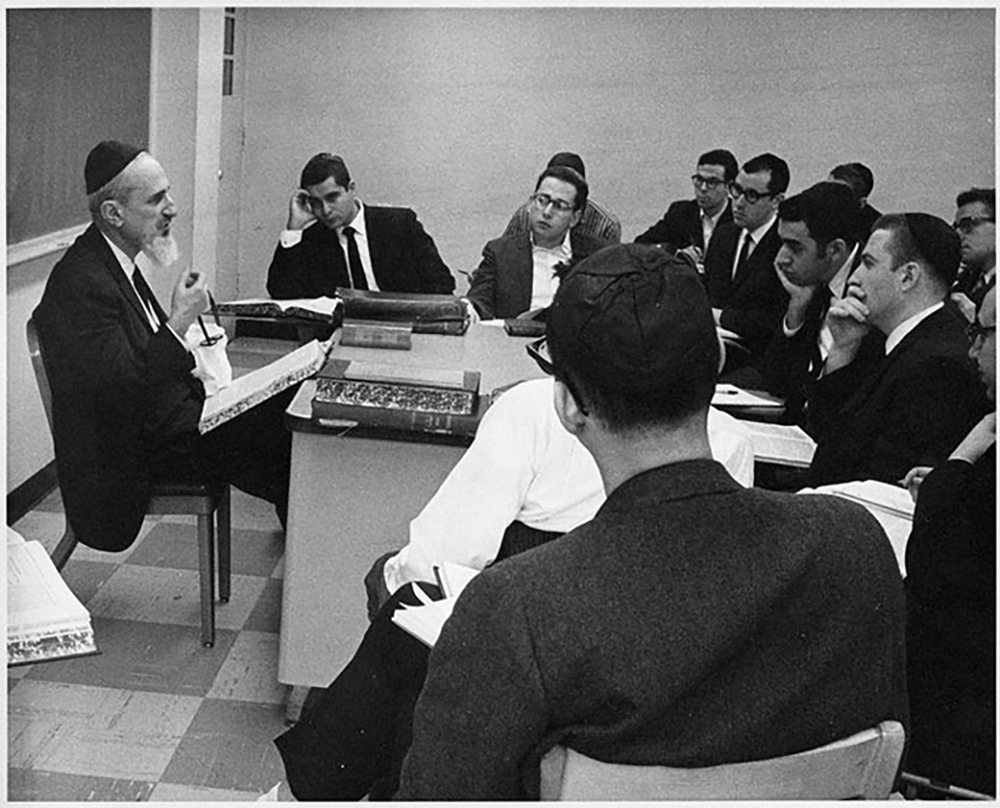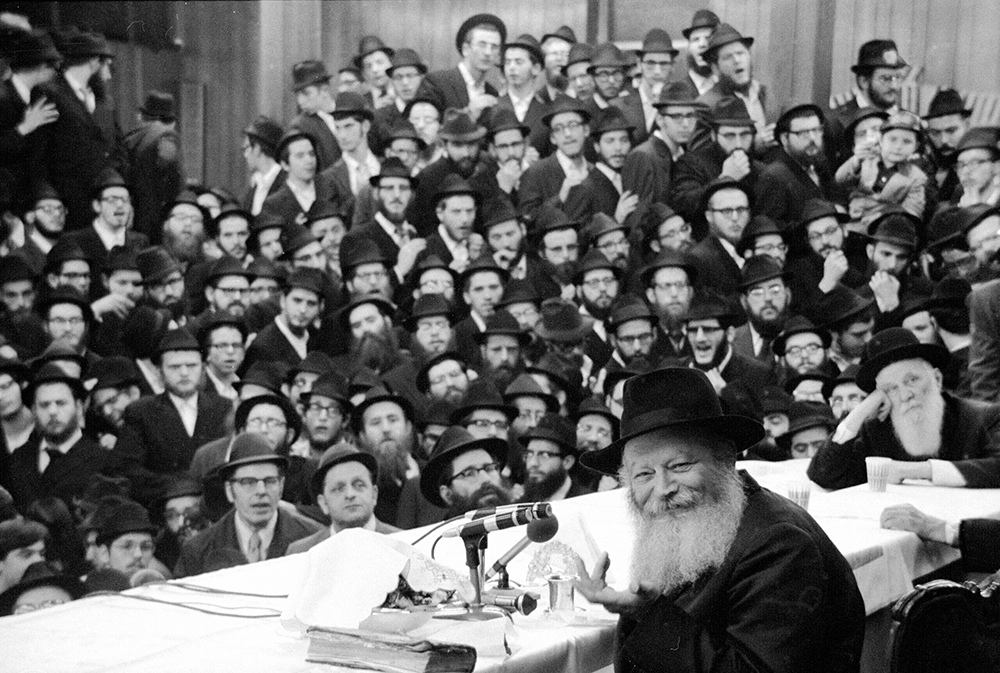|
Getting your Trinity Audio player ready...
|
“Chabad has embraced their Rebbe-less ecosystem,” while Modern Orthodoxy sought a successor to the Rav, according to Gratz College president Zev Eleff.
By: Dovid Zaklikowski
The Chabad-Lubavitch movement marked the passing—30 years ago—of Rabbi Menachem Mendel Schneerson, the Lubavitcher Rebbe, in July. The movement, which operates about 4,000 institutions in more than 100 countries and territories per its website, continues to draw inspiration from the late Rebbe’s teachings, but for the first time in its more than 200-year history, it has had no spiritual leader at its helm for a prolonged period.
The Rebbe died on June 12, 1994, at the age of 92, the year after Rabbi Joseph Soloveitchik—the visionary of the Modern Orthodox movement who is known as the Rav—died at 90 on April 9, 1993. The movements have adapted differently to their new realities without an unequivocal leader, experts and insiders told JNS.
“Great people die sometimes,” Rabbi Menachem Genack, CEO of the Orthodox Union’s kosher division, told JNS. “They are not easily replaced.”
Many Modern Orthodox rabbis of great stature have followed in Soloveitchik’s footsteps, according to Genack, the spiritual leader since 1985 of Congregation Shomrei Emunah in Englewood, N.J. “But, of course, his voice is missing,” Genack told JNS.
The two leaders had very different approaches, which bred varying sorts of followings, according to Jonathan Sarna, university professor, professor of U.S. Jewish history and director of the Schusterman Center for Israel Studies at Brandeis University in Massachusetts.

“Rabbi Soloveitchik did not have Chassidim,” Sarna told JNS, referring to the followers of Chassidic rebbes, who have very close, often emotional, connections to their leaders. “That is part of the difference between his world and the Rebbe’s world.”
The Rav “was a great philosopher,” while the Rebbe was “an enormous personality, and he has these missaries who carry forth his projects long after he is gone,” Sarna said.
No one now speaks for American Orthodoxy, according to Sarna. “I hope that someone will take that mantle, but it has not happened yet,” he said.
‘Lack of a Rebbe hurts’
Not only do Chabad and Modern Orthodoxy have to navigate difficult times, particularly after the Hamas terrorist attacks in southern Israel on Oct. 7—the single deadliest day for Jews since the Holocaust—and the deadly COVID-19 pandemic without their luminaries, but both face a question that runs parallel to the one that looms for Holocaust education, as survivors who witnessed the Shoah continue to age.
If there isn’t to be another Rav or another Rebbe, what will it mean for these movements as they approach a time when rabbis can’t and don’t burnish their credentials by invoking their status based on proximity to the former luminary and the singular understanding of his teachings? Will younger generations feel as connected to leaders, who recede increasingly into the past, when they won’t have teachers sharing firsthand experiences with the Rebbe or the Rav?
Since the Rebbe’s death, “it is very obvious that the organizational leadership has succeeded in tremendous accomplishments in the interim,” according to Lawrence Schiffman, professor of Hebrew and Judaic studies at New York University. But without a successor, the many lay members of the movement who don’t run Chabad centers are “people that are not sure what is going on,” Schiffman told JNS.
Most people who interact with Chabad do so with shluchim (“emissaries”)—rabbis, their wives and their children, who represent a small percentage of members of the movement.
He recalled attending Chabad programs growing up in which Chabad students would spend three times as long as others completing their prayers with special intensity. “That is all gone,” he said.
To Schiffman, “the old-fashioned Lubavitch Chassidim” aren’t as important as they once were, and the movement is more focused on outreach than inner spirituality. “The lack of a Rebbe hurts,” he said.
“You would think that a Chassidic movement needs new teachings and new inspiration from a leader,” Marc Shapiro, chair in Judaic studies at the University of Scranton, told JNS. “There was once every week a new Chassidic gathering with the Rebbe, someone to turn to.”

“Today, that is dead,” added Shapiro, author of the 2015 book Changing the Immutable: How Orthodox Judaism Rewrites Its History.
Young members of the movement “don’t know what it means to be at a gathering with the Rebbe,” he said.
‘How could they feel what I felt?’
Members of the Chabad movement want young people “to feel what they felt, but one cannot convey feelings,” according to one woman who serves as an educator and guidance counselor to many members of the Chabad community, and who spoke with JNS on the condition of anonymity.
“How could they feel what I felt?” she said.
“Saying that ‘the Rebbe would not be happy with this,’ that ‘the Rebbe would be happy with what you are doing,’ I think that is a mistake on our part,” the educator said. “What we end up doing is being very superficial, very ‘rah-rah.’”
She thinks that the movement ought to focus more on teachings, ideals and principles, and while she believes that Chabad does a good job of accepting others who are not Chabad Chassidim, the educator thinks that it does a less effective job of tolerating differences within the movement.
“We are not accepting our own—that they have feelings, challenges and choices they make,” she told JNS.
Still, the educator sees Chabad as essentially healthy, with a bright future. “There is much more good than not good,” she told JNS. “I think that despite our institutions, we still produce people who are more tuned into making the world a better place.”
She thinks one of Chabad’s major successes has been instilling in the movement a desire to create leaders, not followers.
“The Rebbe empowered every individual,” she said.
Marc Asnin is a documentary photographer, whose 1992 photos of the Rebbe appeared in The New York Times Magazine and are featured in the 2024 book The Oracle: Portraits of Rebbe Mendel Schneerson. (Disclosure: This reporter conducted interviews for the book.)
When photographing the Rebbe, “I experienced his love and energy,” Asnin told JNS. “Visiting Chabad Houses across the globe, it is evident that Chabad on many levels have replicated his energy and love.”
“It is a tribute to his inspiration—and his followers’ perseverance—that 30 years after his death, the movement has grown to the extent it has,” Asnin added.
In 2020, the Pew Research Center found that 17% of Jewish Americans reported participating either often (5%) or sometimes (12%) in Chabad activities or services.
‘Still alive’
“Righteous men, even in death, are called ‘alive,’” according to the Talmud. Sivan Rahav-Meir, an Israeli journalist with deep ties in Chabad, told JNS that the Rebbe is still seen as living in the community.
“They for sure miss the Rebbe, but they wake up in the morning in Thailand, Australia or in Israel, and they think how can they make the world a better place,” she said.
The Rebbe “instilled and fostered” the view that “you are not alone—that he is with you,” she said. “It is not like they are missing something that is over. It is alive.”
Several people with whom JNS spoke for this article declined to comment about succession within Chabad, with some telling JNS that they feared repercussions for discussing a taboo subject.
Joseph Waks, a former Chabad representative in Brussels, Belgium, is no longer part of the movement nor is he currently a ritually observant Jew. He doesn’t wear a yarmulke, “but I tell everyone that I am undercover Chabad,” he told JNS.
Chabad is the face of Jewish life today, Waks said, and the movement isn’t just about ritual observance. Chabad has “become an empire and lighthouse for everything Judaism.”
Without a leader, Chabad is still primarily an organization that encourages Jewish observance, but it has become—some argue—much more than Schneerson ever intended.
“The Rebbe became, to me, universal,” Waks said.
‘Who is the heir apparent?’
Zev Eleff, president of Gratz College in the Philadelphia area, is an Orthodox rabbi who holds a doctorate in U.S. Jewish history, as well as a former chief academic officer of Hebrew Theological College and vice provost of Touro College Illinois. He has published extensively on contemporary U.S. Orthodox Jewry, among other topics.
Eleff told JNS that there are good and bad reasons to compare and contrast the leadership vacuums at Chabad and Modern Orthodoxy. “I don’t know if you have apples to apples,” he said. “But you definitely are dealing with fruit.”
Many of the differences between the Rav and the Rebbe are institutional. Soloveitchik “very deliberately” avoided calling himself the head of Yeshiva University, and his role was on par with the university’s president, while Schneerson was “in charge of a discrete movement,” headquartered at 770 Eastern Parkway in the Crown Heights neighborhood of Brooklyn, N.Y.
“Their leadership and the structure look very, very different—not unlike, say, the Presbyterian Church and the Catholic Church, which to some extent have very ratcheted-up leadership structures and other denominations do not,” Eleff said.
Another difference came in the 1980s, when the Rebbe, after having a stroke, “was very deliberately not sequestered,” while “Rabbi Soloveitchik, by 1985, his family had removed him from the public scene, and pretty much no one was provided access to him,” according to Eleff. “The Rebbe’s passing represented a very climactic end. Rabbi Soloveitchik had already been removed from his public influence eight years prior to his death.”
That’s why there was a discussion about succession not in 1993, after his death, but in 1985. “There was a contest for the mantle of Rabbi Soloveitchik,” Eleff said. The Rebbe, meanwhile, was the “uncontested leader of Chabad,” with an understanding that there would be no eighth Rebbe after his passing.
These differences occurred against the backdrop in the mid-1980s and early 1990s to the emergence of a “polarized Orthodoxy, whether because of what we would now call today LGBTQ, but at the time was the gay-rights movement,” Eleff said. “You have the emergence of a stronger yeshivah-world community, in which the Rav was in some circles certainly persona non grata for his endorsement of general studies, Zionism.”
Where Soloveitchik faced criticism within the Orthodox community, the Rebbe’s influence occurred in large part outside of the Orthodox world, engaging less observant Jews.
“Chabad has embraced their Rebbe-less ecosystem, and in some sense, Modern Orthodoxy was, at Rabbi Soloveitchik’s passing—there were a number of articles, ‘Who is the heir apparent?’” Eleff said.
While Chabad “consolidated and closed ranks over leadership,” Modern Orthodoxy was at a “crossroads,” he added. Some of the rabbis at Yeshiva University took what the Rav taught and moved to the right, while others—largely Rabbis Yitz Greenberg, Avi Weiss and Saul Berman, Eleff said—established a more progressive wing of the Modern Orthodox movement.
(JNS.org)





